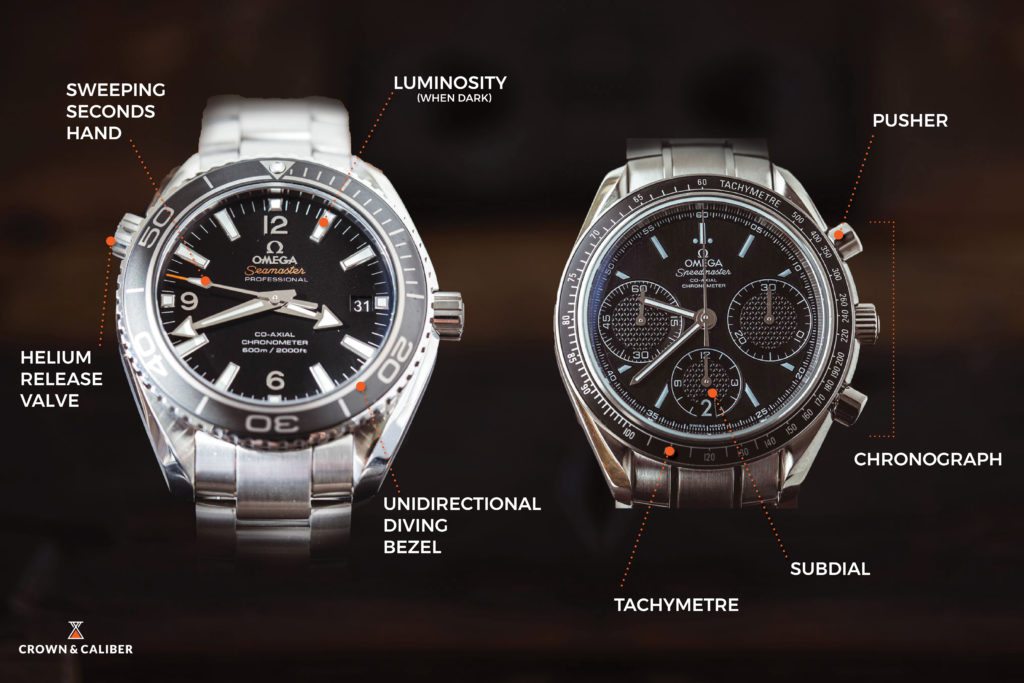Blog
“How to Choose a Watch Based on Its Features and Functions”
Choosing a watch is more than just picking a stylish accessory; it’s about finding a timepiece that aligns with your lifestyle, needs, and personal preferences. Whether you’re looking for a watch for everyday wear, sports, or special occasions, understanding the features and functions available can help you make the best choice. Here’s a comprehensive guide to choosing a watch based on its features and functions.
1. Understanding Your Needs
Before diving into the different features of watches, start by considering what you need from a watch. Are you looking for a watch that can help you stay fit, one that complements your formal attire, or a durable piece for outdoor adventures? Your lifestyle will play a significant role in determining which watch features are essential for you.
- Everyday Use: For casual, daily wear, consider a watch that is comfortable, stylish, and easy to read.
- Sports and Fitness: For athletes or fitness enthusiasts, look for a watch that offers fitness tracking, heart rate monitoring, GPS navigation, and waterproof capabilities.
- Luxury and Formal Occasions: If you’re purchasing a watch for formal events or as a fashion statement, look for models with high-quality materials, sophisticated designs, and mechanical movements.
2. Key Features to Look for in a Watch
When choosing a watch, there are several essential features and functions to consider. Here are some of the most important ones:

A. Movement Type
- Quartz Movement: Known for its accuracy and affordability, quartz watches are powered by a battery and require minimal maintenance.
- Automatic Movement: These watches are powered by the movement of your wrist and are often preferred by watch enthusiasts for their craftsmanship and traditional appeal.
- Manual Wind: These require winding by hand and are considered more of an art piece than a practical timekeeping device.
B. Water Resistance If you plan on wearing your watch while swimming, diving, or engaging in water-based activities, ensure the watch is water-resistant to an appropriate depth. The water resistance rating can range from 30 meters (splash resistant) to 300 meters (suitable for professional divers).
C. GPS and Navigation For outdoor enthusiasts and travelers, a watch with GPS and navigation capabilities is essential. This feature helps you stay on track during hikes, long runs, or other activities in unfamiliar areas.
D. Health and Fitness Tracking Smartwatches and some advanced analog watches offer health monitoring features such as:
- Heart Rate Monitoring: Useful for workouts and tracking overall heart health.
- Step Counters: Helps you keep track of your daily activity.
- Sleep Tracking: Monitors sleep quality and duration.
- Blood Oxygen Level Monitoring: Essential for high-altitude activities or general wellness.
E. Battery Life Battery life can vary significantly depending on the watch type. Quartz watches can last for months or even years without needing a battery change. Smartwatches, on the other hand, may need charging every few days or even daily, depending on their functionality.
F. Display Type
- Analog: Offers a classic and elegant look with hands and a dial.
- Digital: Displays time in a numerical format and is often found in sport-focused watches.
- Hybrid: Combines both analog and digital elements for a modern aesthetic with added functionality.
G. Additional Features
- Chronograph: A watch with a stopwatch function, useful for athletes and sports enthusiasts.
- Alarm: A handy feature for setting reminders or wake-up alerts.
- World Time: Ideal for frequent travelers, allowing you to view the time in different time zones.
3. Choosing Based on Your Style and Preferences
Watches come in different styles and materials that can impact their function and appearance:
A. Watch Case and Band Materials
- Stainless Steel: Durable and resistant to corrosion, commonly used for both casual and luxury watches.
- Titanium: Lightweight and hypoallergenic, perfect for those with sensitive skin.
- Ceramic: Scratch-resistant and often used in high-end watches for its sleek look.
- Leather: Classic and stylish but may not be as durable for sports use.
B. Design and Aesthetics Choose a watch that complements your personal style. If you prefer a modern look, opt for a watch with a sleek, minimalist design. For a more classic or vintage style, look for a watch with an analog display, leather strap, and intricate details.
4. Choosing the Right Brand and Model

Well-known watch brands often offer a variety of models, each with distinct features that cater to different needs. Some popular brands and their features include:
- Rolex: Renowned for luxury, precision, and durability. Best for formal and high-end occasions.
- Casio: Offers affordable, practical models with basic functions and tough designs for everyday wear.
- Garmin: Known for GPS-equipped smartwatches ideal for outdoor activities and fitness tracking.
- Apple Watch: A leader in smartwatches, offering comprehensive health and fitness monitoring, app integration, and seamless connectivity.
5. Final Considerations
When choosing a watch, it’s important to balance functionality, comfort, and style. Take the time to test different models, pay attention to user reviews, and ensure the watch meets your specific needs. Consider the type of activities you’ll be doing, the type of look you want, and the features that will truly enhance your lifestyle. With the right choice, your watch can become more than just a timekeeping device—it can be a valuable tool that reflects your personality and keeps you on track.


